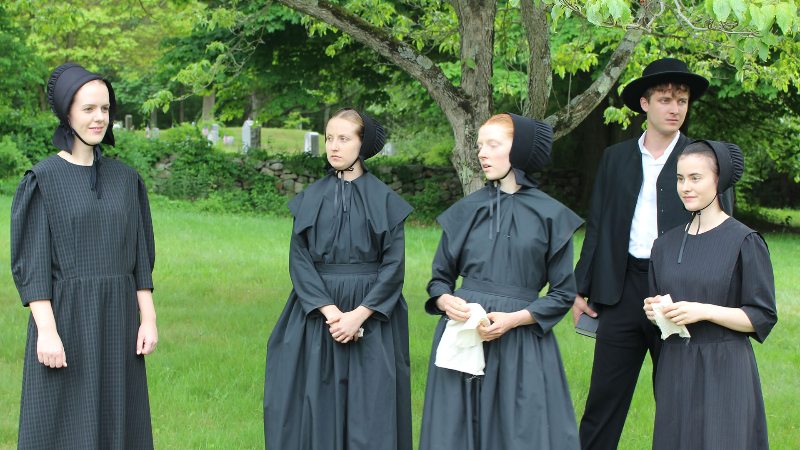Introduction:
Holmes County, a seemingly tranquil region with its picturesque landscapes and idyllic villages, holds a dark witches secret that echoes through the corridors of history—the Holmes County witches. This enigmatic chapter in the annals of witchcraft emerged during a time when paranoia and fear gripped the minds of people, leading to witch hunts and trials that would forever stain the pages of the county’s past. In this article, we delve into the haunting tales of witchcraft in Holmes County, exploring the accounts of examinations, confessions, and the ominous relations that unfolded during this harrowing period.
The Historical Context:
To comprehend the gravity of the Holmes County witch trials, we must first transport ourselves to a time when witch hunts were rampant across Europe, notably in places like Essex and London. The witch trials were a phenomenon that peaked during the late 16th and early 17th centuries, fueled by societal fears and religious fervor. In Holmes County, these trials took a particularly sinister turn as they unraveled a web of accusations, confessions, and sinister relations.
The Examinations and Confessions:
The trials in Holmes County were marked by a series of examinations where the accused witches were subjected to intense scrutiny. The authorities, fueled by a fervent desire to eradicate perceived evil, employed various methods to extract confessions. Witches like Joane Vaughan and Agnes Jenkenson found themselves at the center of these examinations, facing relentless interrogations that aimed to expose their alleged involvement in witchcraft.
The Relation of Severall Informations:
The trials unfolded as a series of relations, where individuals provided information leading to the accusations against the alleged witches. The relations were often a mix of genuine concern, misguided fear, and, in some instances, personal vendettas. The witch trials in Holmes County were fueled by a climate of suspicion, causing neighbor to turn against neighbor in a desperate bid to uncover witches within their midst.
The Witchcraft Bill:
The Witchcraft Bill played a pivotal role in legitimizing the trials in Holmes County. This legal instrument granted authorities the power to prosecute individuals accused of practicing witchcraft. The bill provided a framework for the trials, allowing the county to conduct examinations and proceedings that were, more often than not, biased against the accused. The ominous power of the Witchcraft Bill cast a dark shadow over the lives of those ensnared in its clutches.
Notable Individuals: Joane and Agnes Jenkenson
Among the accused witches, Joane and Agnes Jenkenson’s stories stand out as emblematic of the tragic tales that unfolded in Holmes County.witches Joane, a woman accused of witchcraft, faced a relentless examination that ultimately led to her confession. Agnes, her daughter, also found herself implicated in the trials. The mother-daughter duo’s ordeal sheds light on the heartbreaking impact of the witch trials on familial relations in Holmes County.
The Northampton Connection:
Holmes County’s witch trials bore a striking resemblance to those in Northampton-shire, another region plagued by accusations of witchcraft. The parallels between the two areas underscore the widespread fear and paranoia that gripped communities during this dark period. The Northampton Connection serves as a chilling reminder of the broader societal implications of witch hunts in 17th-century England.
The Role of the Malleus Maleficarum:
The infamous Malleus Maleficarum, a treatise on witchcraft written in the 15th century, played a significant role in shaping the perceptions and methodologies of the Holmes County witch trials. The manual provided a guide for authorities on identifying, prosecuting, and punishing witches. Its influence on the trials further intensified the climate of fear and suspicion that permeated Holmes County during this tumultuous period.
The Aftermath: Holmes County’s Legacy
The Holmes County witch trials left an indelible mark on the region, casting a long shadow over its history. Families were torn apart, lives were ruined, and the scars of this dark chapter lingered for generations. The stories of individuals like Joane Vaughan and Agnes Jenkenson serve as a somber reminder of the human cost of unchecked paranoia and hysteria.
Modern Interpretations: Holmes County Witches in Film
The haunting tales of the Holmes County witches have not been forgotten in the realm of storytelling. The gripping narratives of accusations, examinations, and confessions have inspired various works of fiction, including movies that explore the psychological and emotional toll of the witch trials. These cinematic interpretations shed light on the enduring impact of historical events and the importance of remembering the lessons they impart.
Conclusion:
The Holmes County witches represent a somber chapter in the history of witchcraft trials, where fear, paranoia, and a fervent desire to eradicate perceived evil led to the persecution of innocent lives. The examinations, confessions, and relations that unfolded during this dark period serve as a cautionary tale, reminding us of the dangers of unchecked hysteria. As we reflect on the harrowing stories of Joane Vaughan, Agnes Jenkenson, and others, we must strive to ensure that history does not repeat itself, and that the lessons learned from the Holmes County witch trials are never forgotten.























+ There are no comments
Add yours